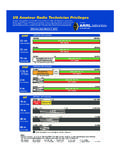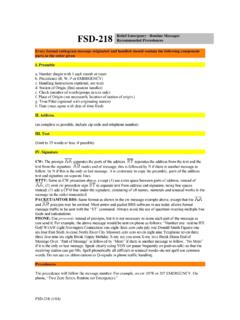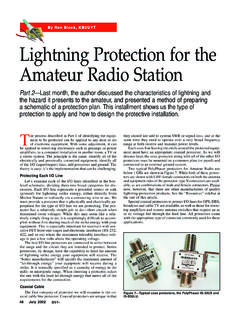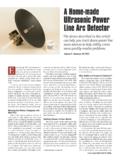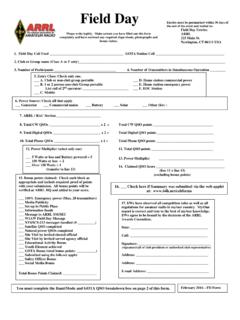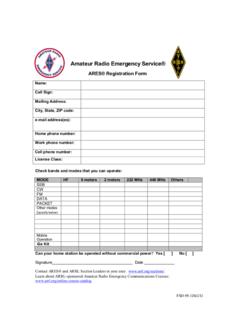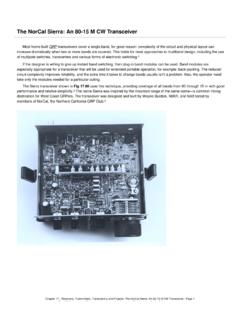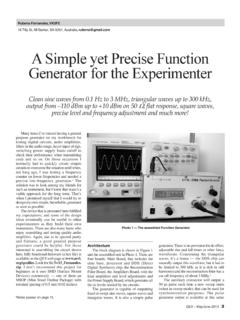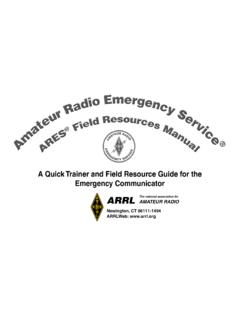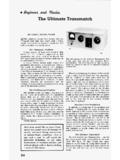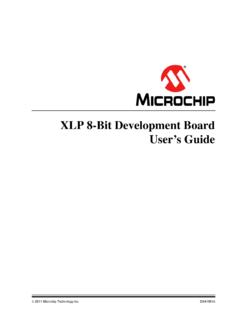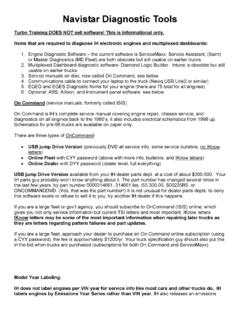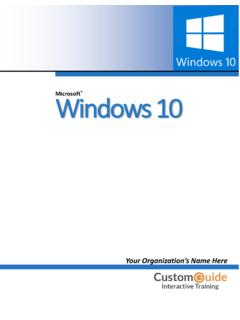Transcription of How to Start Modeling Antennas using EZNEC
1 Starting EZNEC Modeling 1 CTU, Dayton, 2011 How to Start Modeling Antennas using EZNEC Greg Ordy, W8 WWV CTU, Contest University Dayton, May 19, 2011 Version This Modeling tutorial is the companion document to a slide presentation given at a Contest University session on May 19th, 2011 . Table of Contents Introduction ..2 References and Why EZNEC ? ..4 Putting Modeling in Context ..5 Modeling Expectations ..7 Optimizers ..7 Trends and Directions ..8 A Few Words on NEC ..8 Modeling and Computer Performance ..12 Examples ..13 File Open/Save As ..13 Program Options ..15 Wires ..17 Segments ..18 Determining Wire End Coordinates ..20 Trigonometry Refresher and Tips ..21 using Program Shortcuts and Commands ..23 Sources ..27 antenna View (View Ant button)..31 40 Meter Starting EZNEC Modeling 2 CTU, Dayton, 2011 L Networks 160 Meter Vertical ..39 Transformers Flag antenna and Array ..64 Flag antenna RDF Receiving Directivity Checks and Tests.
2 96 Segmentation Check ..97 Geometry Check ..97 Model Convergence Test ..97 Average Gain Test ..99 Conclusion ..105 Introduction The target audience for this material is the antenna enthusiast who has antenna knowledge and experience, but has thus far avoided integrating Modeling into their design and thinking process. Modeling has its own terminology, jargon, rules, quirks, tricks, guidelines, restrictions, limitations, and frustrations. Some aspects of antenna Modeling are immediately familiar to a person with antenna design experience. Other aspects take time to understand, appreciate, and master. A number of very good Modeling tutorials and practical model examples exist and the ones that I am aware of will be listed in the next section. The approach taken here will be to go into painful detail in the running of the EZNEC program while assuming a moderate level of general antenna knowledge. As with so many activities in life, it often comes down to working through a few examples, and getting past those pesky hurdles.
3 My hope is that some of these examples and background information will provide illumination on that initial journey. If you have any questions or comments about the material in this document, I can be reached by email at Although I ve never made a single contact on an antenna model, I would not want to design or install an antenna without at least a quick check of a model to help frame my expectations and crosscheck my measurements. References and Links Starting EZNEC Modeling 3 CTU, Dayton, 2011 The EZNEC 1 software, created and marketed by Roy Lewallen, W7EL, can be obtained from The package comes with a number of example models, and there is an extensive indexed Help 2 facility with information on all aspects of the program. The version used in this document is EZNEC + The name that many people associate with Modeling is Cebik, W4 RNL (SK). wrote extensively about Modeling and Modeling tools. Although now a silent key, s personal web site remains at His work at that site is now maintained by AntenneX, It is necessary to register to access the site, but there is no fee involved.
4 It is well worth it to register and read through the many pages. Antennex, at , maintains a large amount of antenna and antenna Modeling information. Although they have an online journal that has a subscription cost, there is also a guest section that is free. It does appear as if tutorial or teaching material created by W4 RNL has been placed in products with fees. If you register as a guest at you can access a large number of articles, including models and descriptions of models. From time to time the ARRL appears to offer an online course on antenna Modeling that was written by Cebik. Over the years, many articles have appeared in QST and QEX that refer to antenna Modeling . Some links can be found on this page: The ARRL antenna Book makes frequent reference to Modeling , and many of the models presented in the book are included on the CD that comes with the book. The most recent 21st edition includes a free version of EZNEC , called EZNEC -ARRL.
5 Although that might sound appealing, it appears to be nothing more than a frozen-in-time version of the free version of standard EZNEC , and version 3 at that. For normal Modeling , the 20 segment limit applies. That limit can be exceeded for the model files provided with the book. As best as I can tell, it s probably better to just download the most recent free EZNEC , unless models included with the book are of particular interest. Chapter 4 of the ARRL antenna Book is titled: antenna Modeling & System Planning, and contains very useful background information including a Modeling package comparison as well as a good tutorial. In the most recent and last (5th) edition of ON4UN s Low-Band DXing, John Develdere, ON4UN, has supplied most all of the models used in the book on the CD that is included with the book. They are EZNEC models. Chapter 4 of the book is on the topic of antenna Design Software, and includes a history of Modeling as well as additional references and links.
6 1 EZNEC is a registered trademark of Roy W. Lewallen. 2 The EZNEC programs and Help manual are copyright 2000-2007, Roy W. Lewallen Starting EZNEC Modeling 4 CTU, Dayton, 2011 Dan Maguire, AC6LA, has an interesting web site ( ) with a number of programs that work in conjunction with Modeling software. A lot of Dan s work deals with transmission lines, and he is a true expert in that area. If you have transmission lines issues, from theory through practice, talk to Dan. Rudy Severns, N6LF, ( ) is a frequent author and contributor to amateur radio publications. Rudy s work is highly regarded, and he backs up his work with models and/or measurements. He often uses Modeling in his work, and his site covers a number of interesting and contemporary topics. The Modeling package 4nec2 ( ~arivoors) is free, and has a number of users and followers. One interesting feature that it has is the ability to read EZNEC files and run them, as well as create NEC input decks from the EZNEC model.
7 From time to time, this can be quite handy, especially if you find yourself starting to use several different Modeling packages. Some features introduced with EZNEC version 5 are not currently supported and can not be translated and simulated. These include features such as Virtual Wires, transformers, and lossy transmission lines. The Wikipedia has an article about the history of the NEC engines at: Although more about the engine than Modeling with the engine, the NEC-2 unofficial home page is located at: Finally, it never hurts to simply search the Internet for models related to a particular antenna design. Although there are no guarantees of quality, there is a lot of information out in cyberspace, much of it very good. There are many authors who have written on the topic of Modeling , and they should be included on any useful list. I apologize to those I have omitted, and please feel free to contact me and I will update this list.
8 Why EZNEC ? The various forms of the EZNEC3 product family are probably the most popular Modeling packages used by the amateur radio community. At the entry level, there is a free package with all of the features of the commercial version, but limited in the complexity of the model. The examples in this document were simulated with the EZNEC + package. 3 Starting EZNEC Modeling 5 CTU, Dayton, 2011 In some cases, the information will be very specific to EZNEC , and you should not expect to see the identical behavior in other antenna simulators. After all, this is a tutorial about Modeling with EZNEC , not general Modeling . EZNEC and other similar antenna Modeling packages, with few exceptions, are wrappers for the NEC (Numerical Electromagnetics Code) engines. These engines date back to the 1970 s, and were written in Fortran to run on mainframe computers. Going along with that era, these programs accept input in the form of a punched card deck, and the outputs are a large text file full of numbers suitable for printing on a line printer, with fan fold 14 wide tractor feed paper.
9 EZNEC does a lot of work on our behalf to hide all of that mess, and let us work with a contemporary GUI with many powerful features. Many of the concepts, terminology, and jargon used in EZNEC and similar programs come from NEC. This is good news because this means that once you learn one NEC-based program, you can usually pick up others quite quickly. Each NEC shell or wrapper has its own strengths and weaknesses, and don t be surprised if you collect several as the years go by. Since the NEC engines are ancient in terms of computer evolution, they might seem to be static, out of data, and maybe even falling behind. In some ways, they are! I don t believe that the core engines have been officially enhanced in decades. Fortunately, Modeling tools can continue to advance by building upon features long present in NEC but unused or at least underused. Just because NEC is effectively frozen in time, don t think that NEC-based tools are they are not.
10 If you tried Modeling several years ago, and were frustrated by not finding some capability, it may be time to check again. Putting Modeling in Context I think of Modeling as one part of a three part approach to successful antenna design and implementation. The three parts are: Theory (Math) Modeling Measurements Each of these can be used to drive a design process, but they also serve to crosscheck each other. The idea is to create a solid and broad base that provides results we can be confident in. I sometimes think of theory as math , so that I can remember the 3M s. Starting EZNEC Modeling 6 CTU, Dayton, 2011 If traditional antenna theory says that the impedance of a half wavelength dipole in free space is around 72 Ohms at resonance, and a model taking into account the wire diameter and the height about ground reports 65 Ohms, and the measured value is 61 Ohms, we can be more confident that we have built a form of what we modeled, and what is close to a textbook half wavelength dipole.
